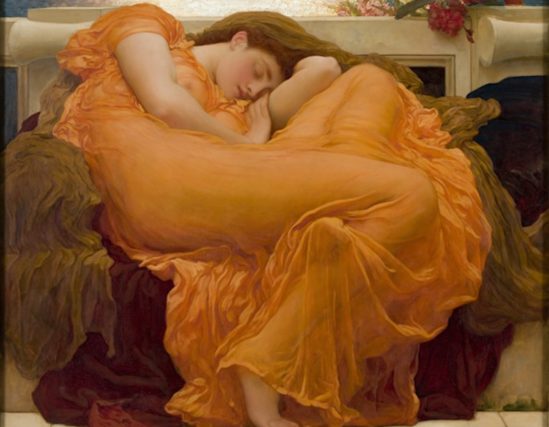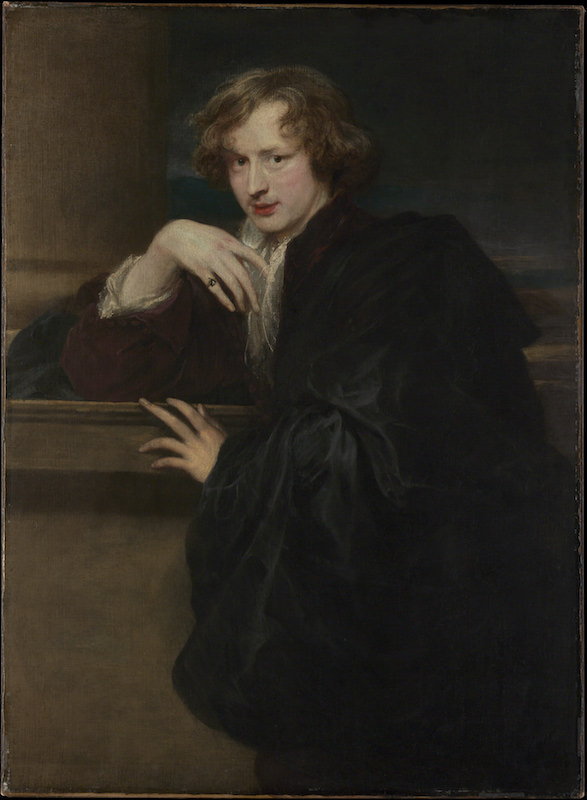
It’s been twenty-five years since Anthony van Dyck received the sort of attention in this country that he’s now enjoying at the Frick. His last major retrospective was installed at the National Gallery in Washington, and was, fortuitously, timed to coincide with a show there of Titian’s paintings. I made the mistake of walking through the Titian exhibition first, and by the time I reached van Dyck he seemed—and I don’t admit this proudly—like a pale echo of the Venetian master. No other master was a greater admirer of Titian than was van Dyck, and proof of that, in the heroic conception of his subjects, the love of smoldering color, and even the sure and often abbreviated preparatory drawings, runs through the current show, Van Dyck: The Anatomy of Portraiture. This is the first show to focus on his portraits alone, and though by definition this means we’re denied van Dyck’s great works of historical, biblical, and mythological themes, we are treated to the genre in which he has exercised the most lasting influence.
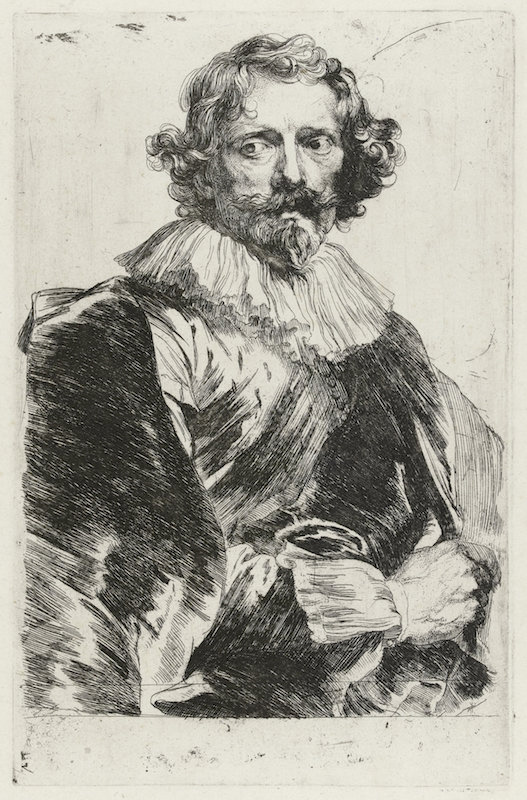
One of the things that’s impressive about van Dyck is his ability to portray introspective subjects with theatrical flair. There’s no better evidence of his psychological and technical range than the etching of Lucas Vosterman, one of numerous works included here from the Iconographie, van Dyck’s attempt to catalogue prominent men of his time via engraved portraits. Vosterman was a gifted engraver who, depending on the sources, either menaced Rubens’ life or was merely an underappreciated drudge for the master. Based on his intense countenance in the van Dyck etching, the interpretation can go either way. The etching may reside in memory longer than some of the painted portraits; it would fit quite nicely into Delacroix’s romantic oeuvre, and was a touchstone image to the printmaking renaissance of the mid-1800s.
The Vosterman etching is one of dozens of small pieces installed in the cozy downstairs galleries, among which are rapid preparatory drawings, highly resolved portrait drawings for Iconographie, and oils, including a pair of very youthful self-portraits. The danger of racing through the drawings in a hurry to get to the main event upstairs is that of glossing over van Dyck’s draftsmanship. He demonstrated extraordinary precision and facility with the pencil (and pen, brush and ink, though there are too few examples here) that was born from necessity. I’m not the first to cite the compromises wrought by photographic technology, but without getting all Luddite on the matter, van Dyck’s little portrait drawings are miracles of direct apprehension, sensitive to their subjects’ personalities, the substance of their skin and clothing, freely mixing tight observation and shorthand notation, as in Jan van Ravesteyn. Though van Dyck’s impact on swagger portraiture is well-known, the debt owed to him by Ingres and Degas is less often acknowledged.

There are, as well, two memorable small oil portraits in the lower level’s North Gallery, each borrowed from a private collection. These were studies for what would have been the artist’s largest work, a group portrait of magistrates that never materialized. They are beautiful fragments. Portrait Study of a Man, Facing Right, is further proof, as if any is needed, of van Dyck’s genius for the flashing grasp of a man’s physical bearing, and of what deeper aspects of the subject’s personality may be gleaned from a steadfast gaze and impromptu curl of facial hair.
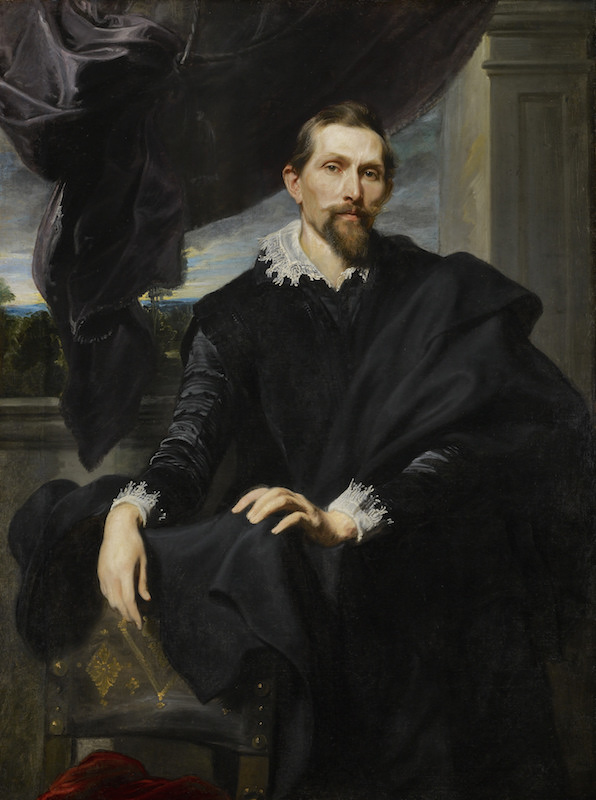
Upstairs, the Oval Room reminded me of the first large gallery in last year’s Sargent show at the Metropolitan Museum, wherein were gathered the major early portraits. There is the common ground of supremely cultivated styles and the attendant sense that both artists were relying on their prodigious skills to get ahead in the world; as a young man on his first trip to Italy, van Dyck was already accompanied by an entourage. What the Oval Room installation lacks in breadth it atones for in depth. There are the Frick’s disconcertingly skillful portraits of Frans Snyders and his wife, painted when van Dyck was no more than twenty-one—the former is a picture of triumphant elegance, the latter of warm sobriety; the coquettish youthful self-portrait borrowed from the Met; and a masterful portrayal of Nicholas Lanier, King Charles’ agent in acquiring art for the royal collection, and who appears to have been fatigued, if not annoyed, by the rigors of posing. Among these luminaries, the highlight of the room is Cardinal Guido Bentivoglio, painted in Rome in 1623 and borrowed from the Pitti Palace in Florence. It displays a conscientious and entirely successful determination to carve a palpable and intelligent presence in three-dimensional space, as if bringing a marble by Bernini to chromatic life. Of all the paintings on display, it is least well-served by reproduction, where its life-sized rhythmical posture, rich color, and vibrant chiaroscuro are inevitably lost.
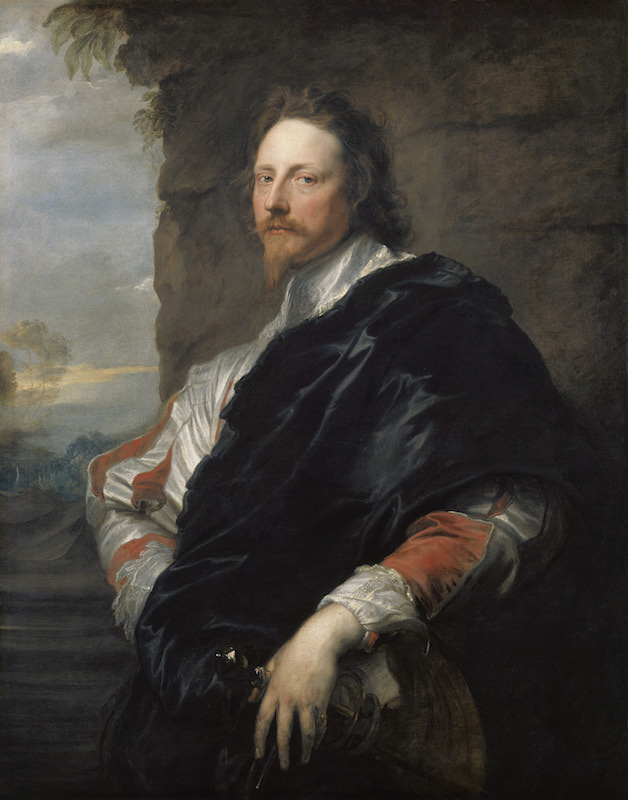
Oil on canvas, 43 11/16 × 34 1/2 in. Kunsthistorisches Museum, Wien, Gemäldegalerie
Later portraits, those of his English period, are ensconced in the East Gallery. Among these are Charles I and Henrietta Maria Holding a Laurel Wreath, painted soon after van Dyck moved to London and entered the king’s employ. Commissioned as an improvement of a previous composition by Daniel Mytens, the coloration of Charles’ robe is a dazzling nod to Venetian painting. In the years that followed, a studio of assistants was necessary to help van Dyck satisfy the demand for his portraits. Sometimes he painted only the heads and hands, and his practice became one of methodical efficiency, with subjects hustled in and out by the hour, each making way for the next sitter. Naturally, the product sometimes suffered as a result, and even ostensibly personal paintings like those of his mistress and his wife lack for vitality, but there was no indication that the inconsistencies were fatal. The Met houses several notable late portraits, and the presence of Messrs. Rich or Stuart would have enhanced the last room. In their stead we have François Langlois, Playing a Musette, possibly one of van Dyck’s last portraits. It’s been suggested that Langlois was influenced by Frans Hals, a superficial resemblance; the perfection of attitude and atmospheric coloring come closest to another of van Dyck’s contemporaries: Velázquez. Which is to say, it is one of the finest portraits of its time, and suggests a direction that van Dyck didn’t live long enough to follow.
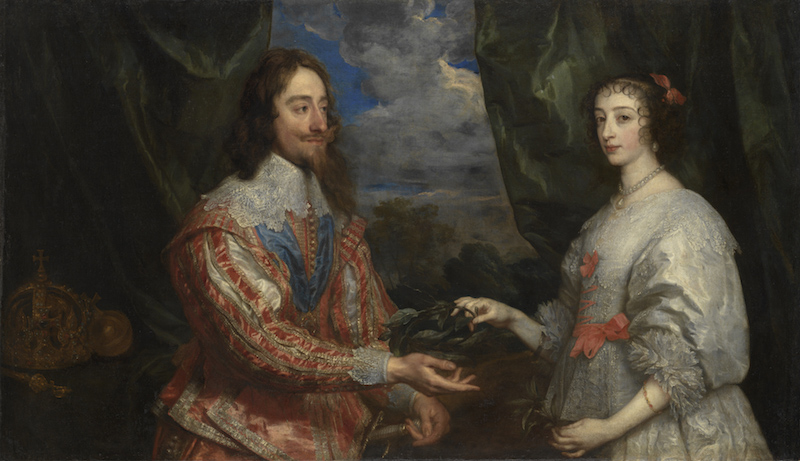
Oil on canvas, 41 × 69¼ in. Archiepiscopal Castle and Gardens, Kroměříž
On the way out I did what one imagines van Dyck would have done, and stopped at Titian’s Portrait of a Man in a Red Cap. I took the same path after viewing last year’s Andrea del Sarto show (reviewed here), and found it instructive in contrasting Florentine and Venetian approaches. On this occasion, I noted the timelessness of Titian’s subject, its mood of reverie all but unknown to van Dyck’s sitters, who exist somewhat anxiously in their sumptuous environment. His observations are time and again rescued from the banality of official portraiture by an exquisite sensitivity to the individual, and by a technical aptitude that made it possible to chart those observations with the utmost finesse.
Van Dyck: The Anatomy of Portraiture continues at the Frick Collection through June 5, 2016.



